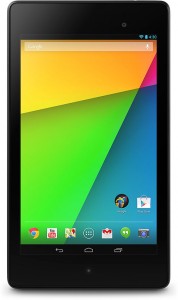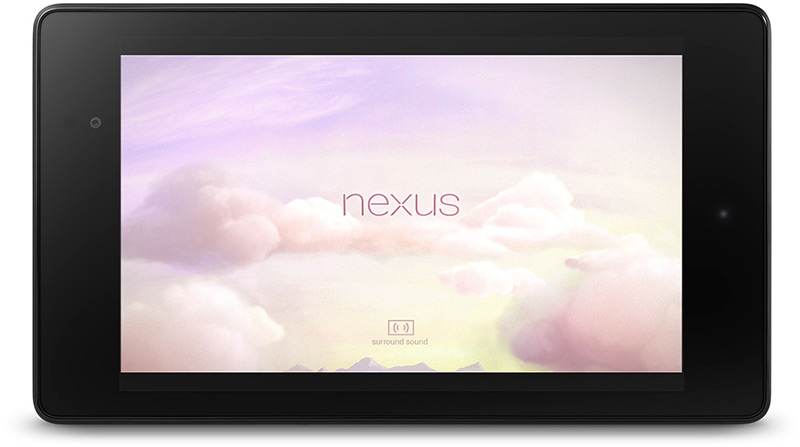Last year, Google released the first Nexus tablet – the Nexus 7. The 7-inch tablet was popular, with a great design, fast stock Android and a low price. Now, Google are upgrading the Nexus 7 with new and improved hardware, a sleeker design and the latest version of Android. Let’s take a look at the new Nexus 7.
Hardware
The new Nexus 7 has been upgraded substantially, but the first thing you’ll notice is the new display. The old Nexus 7 had a 1280 x 800 IPS display, while the new model boosts this to 1920 x 800 – greater than Full HD (1080p). High definition films and magazines look great thanks to that sharpness and verve. The display is gorgeous too, with excellent colour accuracy and viewing angles. The Verge editor David Pierce called it “one of the best tablet screens [he’s] ever seen, maybe the best.”
The hardware inside has changed as well. The old Tegra 3 chip has been swapped for a Snapdragon S4 Pro – the same chip that’s inside the Nexus 4, Sony Xperia Z and Oppo Find 5. It’s not the latest and greatest – the Snapdragon 600, 800 and Tegra 4 all would have provided better performance – but it’s a big upgrade over the older Nexus 7. This change is augmented with 2 GB of RAM on the new device, versus just 1 GB on the original.
One of the biggest problems with the old Nexus 7 was its flash storage – it started out fine, but over time it just got slower and slower, introducing lots of lag. That should be solved with the new Nexus 7, which includes much faster flash memory and a new TRIM feature in Android to keep speeds consistently fast. Storage capacity is also decent – you have a choice of 16 or 32 GB models.
Finally, the Nexus 7 also supports wireless charging – a feature that hasn’t been mentioned much. Like the Nexus 4, this wireless charging uses the Qi (pronounced: Chee) standard, so any of our range of charging pads and charging mats with the Qi label should work well.
Design
The actual physical design of the Nexus 7 hasn’t changed too much – you’re still getting a thin and tall 16:10 aspect ratio device, with big bezels on the top and bottom, although the bezels on the sides have shrunk a bit. The soft touch material on the back has been changed slightly from the older model, but still feels comfortable in the hand. Probably the biggest change is the thickness – it’s just 8.65 millimetres now, down from 10.5 millimetres on the old model. All around, the design is clean and professional.
Android
So the new Nexus 7 introduces the latest version of Android – version 4.3 Jelly Bean. That’s the same moniker as we’ve seen for 4.1 and 4.2, and as you’d expect that means rather minor changes. New to Android 4.3 is support for Bluetooth Low Energy (which’ll make the OS better for wearable devices like fitness accessories) and Open GL ES 3.0 (which allows for improved graphics). Neither change is particularly noticeable day-to-day, but they should allow for some new capabilities somewhere down the line. The latest version of Jelly Bean should also include some performance improvements, too.
Conclusion
UK pricing and availability hasn’t yet been announced, but Google have had a good track record in bringing their products to the UK in a timely fashion so I’m sure we’ll see it soon. If you like, you can visit their site to sign up for an email alert when the device is available.
The Nexus 7 feels like a solid upgrade over its predecessor, solving its biggest flaws while adding on a lot of value. If you’re picking up the new Nexus 7, be sure to have a look at our range of accessories for the device! We’ll have the usual mix of Nexus 7 (2013) cases, covers, wired and wireless chargers and more.

